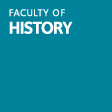At the end of the Second World War, millions of men, women, and children shared a similar experi- ence: delousing, at the hands of Allied armies and relief agencies, to prevent the spread of infectious disease. The procedure lasted seconds. In studies of displaced populations in this period, its effects upon them are commonly presented as invasive, humiliating, and, for some, reminiscent of Nazi abuse. Adopting a wider lens, this article explores how events and developments in a global range of settings shaped demands for effective delousing as well as the character of measures devised to achieve it. Harnessing fresh perspectives on how delousing was managed, delivered, and experienced, the article also advances understanding of how refugees responded to it.



